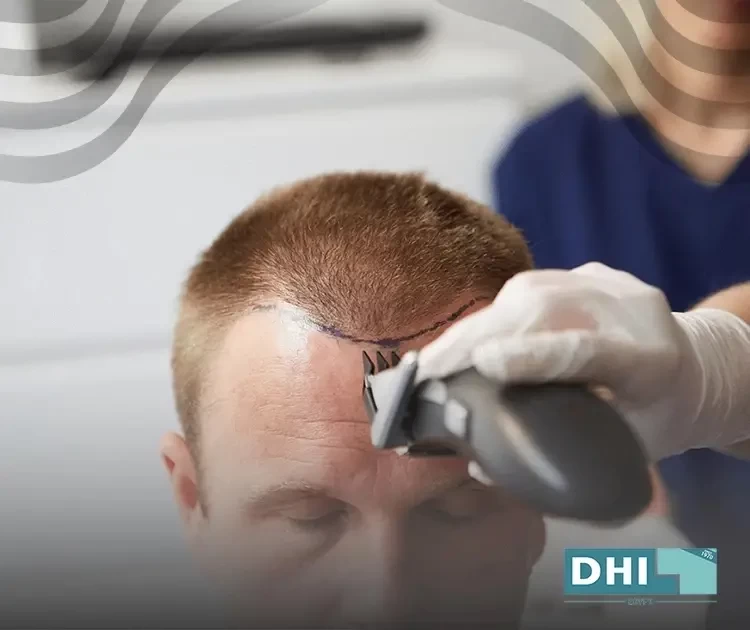The question, "Is hair transplant dangerous?" is understandable. Explore our guide to learn the truth about this life-changing procedure's safety and to dispel any misconceptions. Explore the truth behind the risks and make an informed decision about your hair restoration journey.
Are you concerned about the safety of hair transplants? Let's uncover the facts. If you are wondering, "Is hair transplant dangerous?" our guide has you covered.
An overview of hair transplantation
Before delving into the question of "Is hair transplant dangerous or not?" A hair transplant is a surgical procedure in which hair follicles are extracted from one area of the body (usually the back or sides of the scalp, referred to as the donor area) and transplanted to another area of the body that is thinning or losing hair.
The primary goal is to redistribute healthy hair follicles to areas where hair growth is desired, providing a long-term solution to baldness or hair thinning. Hair transplantation techniques vary, but the most common are follicular unit extraction (FUE), follicular unit transplantation (FUT), and direct hair implantation (DHI).
Reasons why people get hair transplants
People choose to have hair transplants for a variety of reasons, and these motivations can vary from person to person. Here are some of the most common reasons why people choose hair transplantation:
-
Genetic Baldness (Androgenetic Alopecia): Hair transplant offers a permanent solution to restore lost hair in these genetic cases.
-
Improving Self-Esteem and Confidence: Restoring a natural-looking hairline through transplant can contribute to improved self-image and confidence.
-
Permanent Solution: A hair transplant is often considered a permanent solution compared to temporary measures like wigs, hairpieces, or topical treatments.
-
Medical Conditions or Treatments: Certain medical conditions, such as alopecia areata or scarring alopecia, may lead individuals to consider hair transplant as a viable treatment option.
-
Desire for a Natural Look: Hair transplant procedures, when performed successfully, can provide a natural-looking result.
-
Hairline Redesign: Some people choose hair transplantation to redesign or lower their hairline, thereby improving their facial features and overall appearance.
So, Is hair transplant dangerous, and how risky is it?
Is hair transplant dangerous, and what are the risks?
Hair transplantation is a safe and minimally invasive outpatient procedure. Potential risks and complications are thoroughly discussed during your individual consultation with our qualified surgeon.
Experienced professionals have demonstrated that hair transplant techniques are both safe and effective.
Risks associated with hair transplant surgery
Despite the generally low risk, it is critical to recognize that, as with any surgery, there are associated risks.
-
The risks of general anesthesia include rare but severe allergic reactions that can be fatal.
-
Surgical risks, such as bleeding or infection.
-
Scars that are severe, raised, reddened, and itchy are possible.
-
There is a risk of nerve damage, which could result in permanent loss of sensation.
-
Tissue death along the wound is a possibility.
-
Additional surgery may be required to address complications.
-
Generally, the donor area will experience some temporary numbness, which will usually go away in 3–18 weeks.
-
Hiccups may occur after surgery. Although the reason is unknown, hiccups appear to be more common following hair transplantation than scalp reduction.
Let us now address the question, "Is hair transplant painful?"
Is hair transplant painful?
In addition to discussing "Is hair transplant dangerous?". Is hair transplant painful? ... You may experience increased pain in the evening and the day following the procedure. This discomfort can be felt in both the donor area and the newly implanted hair regions, but is usually not severe. The procedure involves numerous small cuts, and once the local anesthetic wears off, you may start to feel some of these cuts.
Why is DHI hair transplant the most secure technique?
A DHI hair transplant is a minimally invasive procedure that requires no incisions in the recipient area and no stitches in the donor area. This results in a faster recovery with no risk of scarring.
Local anesthesia is used during the procedure to ensure patient safety and comfort. This ensures the patient's comfort, allowing the surgeon to perform hair extraction and implantation more efficiently.
The DHI procedure is straightforward, allowing patients to engage in activities such as gaming or watching television during the procedure. Full hair growth is usually seen 8-12 months after a DHI hair transplant.
In conclusion to our discussion about “Is hair transplant dangerous?” While the risks associated with hair transplant procedures are generally minimal, seeking expert advice is crucial. For more information, contact DHI clinics in Egypt and make informed decisions about your hair restoration journey.

